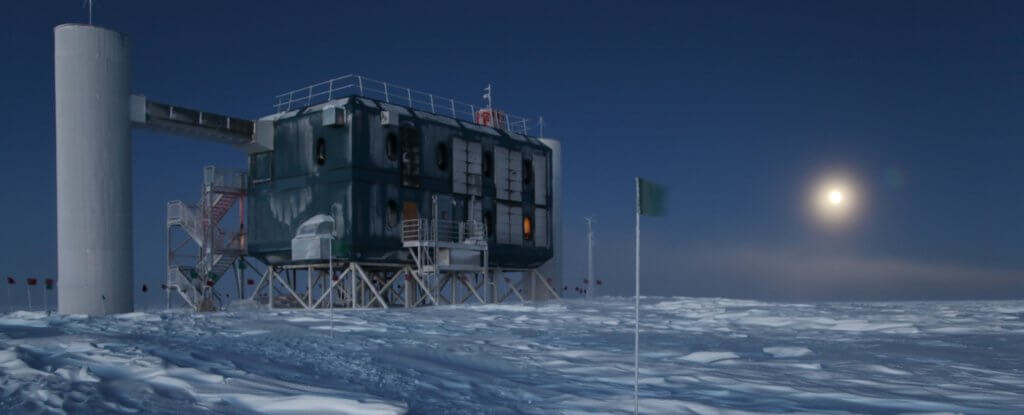
Astronomers from around the world trying to solve the mystery of fast radio pulses is an incredibly powerful millisecond flares of radio waves coming to us from somewhere outside the Solar system. We still have not figured out what they represent. We don’t even know exactly where they are coming from, since most of the detected sources in most cases reject them only once. However, scientists believe that the answer to this mystery may be hiding in neutrinos, and help us to solve capable telescope IceCube located at the South pole.
For the first time on the rapid radio pulses (FRB) we learned in 2007 when they were discovered in the recorded data of radio observations of the Australian Parkes Observatory in 2001. First a quick pulse in real-time was obtained only in 2015, again the same Observatory. And later it was discovered and recorded nearly two dozen sources of these FRB.
“This is a real new kind of astronomical events. We know very little about these signals as a whole,” says physicist Justin Vandenbroeck from the University of Wisconsin, working with the IceCube telescope.
Installation of IceCube is an optical telescope specially designed to detect neutrinos – strange elementary particles, with little to no weight, almost never interact with ordinary matter, and even moving at nearly the speed of light. Scientists believe that the particles, neutrinos can be produced by high-energy events and disasters like the collision of black holes, clusters of galaxies or emission of gamma radiation.
To determine these tiny particles in a clean, dry and stable atmosphere, the South pole IceCube uses 5160 optical modules with an incredibly wide viewing angle. When a radio telescope determines the FRB signal, the IceCube telescope can simultaneously start collecting their own data for checking the activity of neutrinos. To date, this method has already been used in 30 cases, the FRB signals, including 17 signals FRB 121102. They all share a common name since it was from the same source.
The test showed no abnormal activity neutrino, but this does not mean that the work was meaningless. Quite on the contrary, it helped to narrow it down, reducing the options of sources that these signals are supposed to send.
“With this we have eliminated the emission of gamma radiation and put under serious doubt the option of black holes,” — says Vandenbrook.
Over the next decades radio telescopes will become more and more powerful. It is expected that in 2020 we will start to work the telescope SKA (Square Kilometre Array, “Antenna array in square kilometer”), that will be truly effective in finding the FRB-signal medium, and low frequency. But only launched in February of this year, the new telescope “Pathfinder the Australian square kilometer lattice” (ASCAP, Australian Square Kilometre Array Pathfinder) has managed to find three new FRB signal. Scientists believe that the signals will soon be detected with greater frequency, and some even believe that the Universe of such signals appear every second.
The South polar Observatory will help solve the mystery of fast radio pulses
Nikolai Khizhnyak